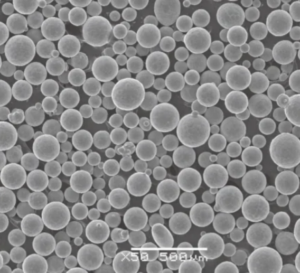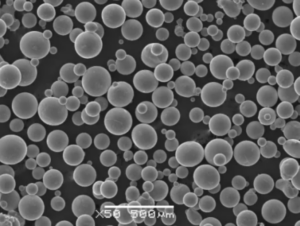概要
材料科学と工学の領域において、球状化粉末は、特に金属積層造形、粉末冶金、および関連分野において重要な要素となっている。この種の粉末は、その形態を変化させるユニークなプロセスを経て球状粒子になり、流動性、充填密度、およびさまざまな用途における全体的な性能を向上させる。しかし、球状化粉末とは一体何なのでしょうか?なぜそれが先端製造において非常に重要なのでしょうか?この包括的なガイドでは、球状化パウダーの組成や特徴から様々な用途や利点に至るまで、球状化パウダーの内と外を探ります。また、具体的な金属粉末のモデルについても掘り下げていきますので、この記事を読み終える頃には、この魅力的な素材について深く理解していることでしょう。
球状化パウダーを理解する
球状化パウダーとは?
球状化粉末は、球状に加工された金属粉末の一種である。球状化処理には通常、不規則な形状の粒子を滑らかな丸い粒子に変化させる熱処理または噴霧化技術が含まれる。この加工により、粉末の流動性が大幅に改善され、表面積対体積比が減少し、充填密度が向上する。これらの特性により、球状化パウダーは積層造形、粉末冶金、コーティング用途などの産業で非常に望ましいものとなっている。
なぜスフェロイド化が重要なのか?
なぜわざわざ金属粉を球状にするのか?その答えは、この粉末がもたらす性能の向上にあります。球状粉末は流動特性が良く、3Dプリンティングのように一貫した材料流動が高品質パーツの製造に不可欠なプロセスでは極めて重要です。さらに、これらのパウダーはより高密度に充填されるため、最終製品の機械的特性を向上させることができる。また、表面積が小さいということは、酸化や汚染が少ないということであり、より純粋な最終製品につながります。
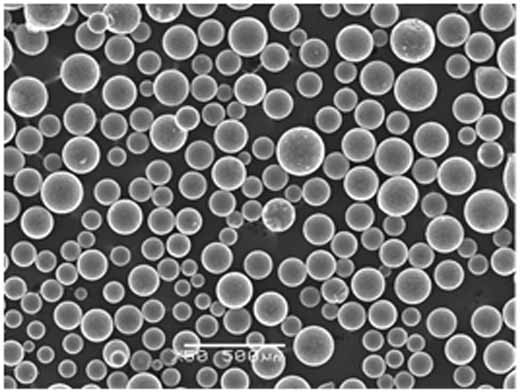
球状化パウダーの用途
スフェロイジングパウダーは万能ではありません。その用途は、金属の種類、最終製品に求められる特性、製造工程によって異なります。ここでは、球状化パウダーが使用される主な分野を簡単にご紹介します:
| 申し込み | 説明 |
|---|---|
| アディティブ・マニュファクチャリング(3Dプリンティング) | 一貫した材料フローとレイヤーデポジションで、高精細かつ高強度のコンポーネントを製造するために使用されます。 |
| 粉末冶金 | 圧縮・焼結プロセスを通じて、緻密で強靭な金属部品を製造するのに不可欠。 |
| 溶射コーティング | 均一な分布と基材への強力な接着を確保することで、コーティングの品質を向上させる。 |
| 金属射出成形(MIM) | 原料の流動性を改善し、最終製品の密度と機械的特性を向上させる。 |
| 表面処理 | 耐摩耗性、硬度、耐食性を向上させる表面改質技術に使用される。 |
球状化パウダーの組成
球状化パウダーの主要要素
球状化粉末の組成は、特定の用途要件を満たすように調整される。一般的に、これらの粉末はベースメタル、合金元素、時には特定の特性を高めるための少量の他の化合物から構成されています。以下に、様々な球状化粉末に含まれる一般的な元素の内訳を示します:
| エレメント | 粉体の球状化における役割 |
|---|---|
| 鉄(Fe) | 鉄鋼や鉄系粉末に多く、強度と硬度を与える。 |
| アルミニウム(Al) | 軽量で耐食性に優れ、航空宇宙用途や自動車用途によく使用される。 |
| チタン(Ti) | 強度対重量比が高く、航空宇宙や医療などの高性能用途に最適。 |
| ニッケル(Ni) | 耐食性と靭性を高め、高温用途の超合金によく使用される。 |
| 銅(Cu) | 優れた導電性を持ち、電子機器や熱管理に使用される。 |
| コバルト | 耐摩耗性と硬度を向上させ、切削工具や高強度用途によく使用される。 |
| クロム(Cr) | 耐食性と硬度を高め、ステンレス鋼や耐摩耗性の用途に使用される。 |
これらの元素を様々な割合で組み合わせることで、様々な産業用途に適した特定の特性を持つ粉末を作ることができる。
球状化パウダーの特徴
物理的および化学的特性
球状化パウダーの特性は、その組成と球状化プロセスに影響されます。ここでは、主な特性のいくつかを見てみましょう:
| プロパティ | 説明 |
|---|---|
| 粒度分布 | 通常、15ミクロンから150ミクロンの範囲であり、流動性と充填密度に影響を与える。 |
| 形態学 | 表面が滑らかな球形で、流動性を高め、摩擦を減少させる。 |
| 流動性 | 球状であるため流量が大きく、AMプロセスにおける安定した材料供給には欠かせない。 |
| 見かけ密度 | 不規則な粉末に比べて密度が高く、最終製品の機械的特性が向上する。 |
| 耐酸化性 | 表面積の減少により酸化が最小限に抑えられ、加工中の純度維持に極めて重要である。 |
| 熱安定性 | 高温でも安定しており、高温用途に適している。 |
これらの特性により、球状化パウダーは高精度、再現性、優れた材料性能を要求されるプロセスに理想的です。
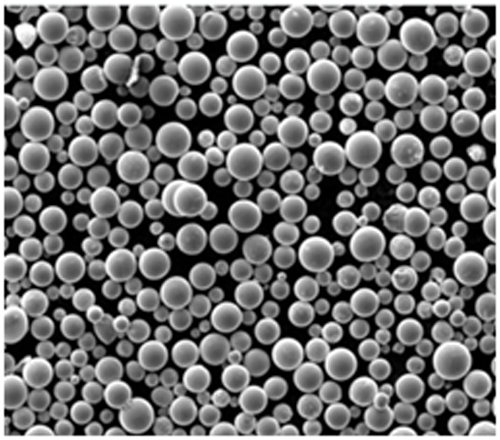
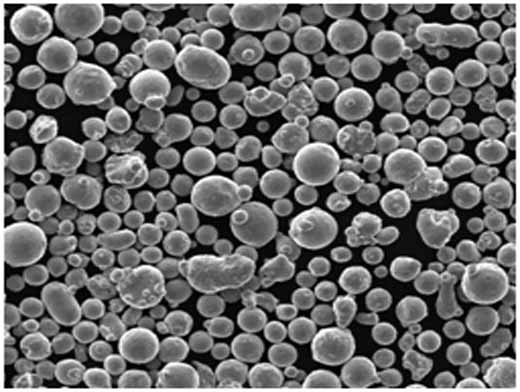

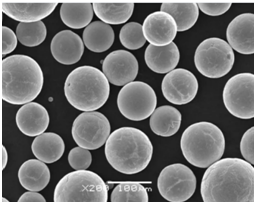
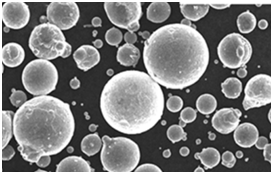
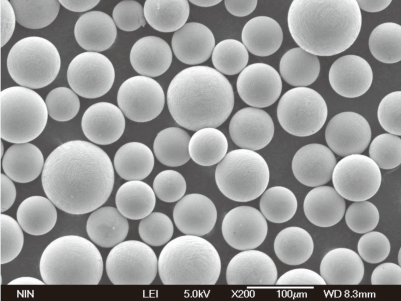
特定金属粉末モデル
市場で入手可能なものをより明確にイメージしていただくために、ここでは特定の用途や産業向けに設計された10種類の球状化パウダーをご紹介します:
1.Feベース球状パウダー
- 構成:鉄を主成分とし、炭素やその他の合金元素がわずかに含まれる。
- プロパティ:高強度、優れた耐摩耗性、熱安定性。
- 用途:粉末冶金、自動車部品、産業用工具。
2.AlSi10Mg球状粉末
- 構成:アルミニウムに10%のケイ素と0.4%のマグネシウムを含む。
- プロパティ:軽量、優れた熱伝導性、良好な機械的特性。
- 用途:航空宇宙、自動車、軽量構造部品。
3.Ti6Al4V球状粉末
- 構成:チタンに6%のアルミニウムと4%のバナジウムを合金化。
- プロパティ:高い強度対重量比、優れた耐食性。
- 用途:航空宇宙、医療用インプラント、高性能エンジニアリング部品。
4.316Lステンレス鋼球状粉末
- 構成:鉄、クロム、ニッケル、モリブデン。
- プロパティ:耐食性、優れた機械的特性、生体適合性。
- 用途:医療機器、食品加工機器、化学加工。
5.インコネル718球状粉末
- 構成:クロム、ニオブ、モリブデンを含むニッケル基超合金。
- プロパティ:高温強度、耐酸化性、耐食性に優れる。
- 用途:航空宇宙、ガスタービン、高温用途。
6.CuCrZr球状粉末
- 構成:銅にクロムとジルコニウムの合金。
- プロパティ:高い導電性と熱伝導性、良好な機械的特性。
- 用途:電気部品、熱管理、熱交換器。
7.CoCrMo球状粉末
- 構成:コバルト、クロム、モリブデン。
- プロパティ:優れた耐摩耗性、生体適合性、耐食性。
- 用途:医療用インプラント、歯科補綴物、切削工具。
8.マレージング鋼球状粉末
- 構成:鉄ニッケルにコバルト、モリブデン、チタンを加えた合金。
- プロパティ:高強度、優れた靭性、時効硬化能力。
- 用途:航空宇宙、工具、高応力用途。
9.AlSi12球状粉末
- 構成:アルミニウムに12%のシリコンを含む。
- プロパティ:軽量で耐食性に優れ、鋳造が容易。
- 用途:自動車、航空宇宙、一般工学部品。
10.17-4 PHステンレス鋼球状パウダー
- 構成:鉄、クロム、ニッケル、銅。
- プロパティ:高強度、耐食性、良好な溶接性。
- 用途:航空宇宙、化学処理、海洋環境。
これらのパウダーはそれぞれ、その用途の要求を満たすように特別に設計されており、最新の製造における球状化パウダーの多用途性と適応性を示している。
球状化パウダーの利点
球状化パウダーを選ぶ理由
スフェロイド化されたパウダーは、不規則なパウダーに比べ、さまざまな利点があります。主な利点をいくつか挙げてみよう:
| メリット | 説明 |
|---|---|
| 流動性の向上 | 球状にすることで、3Dプリンティングのようなプロセスで重要な流動特性を向上させることができる。 |
| より高い梱包密度 | 球状の粒子がより密に詰まることで、最終部品の密度と機械的特性が向上する。 |
| 還元酸化 | 表面積が小さいと酸化の可能性が低くなり、純度が高く、最終製品の品質が向上する。 |
| 熱安定性の向上 | 球状粉末は高温での安定性が高く、過酷な環境での用途に最適です。 |
| より良い表面仕上げ | 滑らかな球状粒子は、コーティングや印刷工程でより良い表面仕上げをもたらす。 |
| 一貫した品質 | 均一な形状と粒度分布は、異なるバッチ間でより予測可能で再現性の高い結果をもたらす。 |
これらの利点により、球状化パウダーは精度、性能、信頼性が最重要視される産業で好まれる選択肢となっている。
スフェロイジング・パウダーと従来の金属粉末の比較
球状化パウダーと不規則性パウダーの比較
用途に適したパウダーを選ぶには、球状化パウダーと従来の不定形パウダーの違いを理解することが不可欠です。ここで比較してみましょう:
| アスペクト | 球状化パウダー | 伝統的な不規則なパウダー |
|---|---|---|
| 形状 | 球状、滑らか | 不規則で変化に富んだ形状 |
| 流動性 | 素晴らしい | 形や大きさにもよるが、中~不良 |
| 梱包密度 | 高い | 不規則な形状のため、より低い |
| 耐酸化性 | 表面積が小さいため、より良い | 酸化電位が高く、表面積が大きい |
| 熱安定性 | 一般的に高い | 組成により異なる |
| 表面仕上げの品質 | 安定した粒子形状により優れている | 粒子形態が粗いため、より低い。 |
| コスト | 一般的に、追加処理により高くなる | より低く、よりシンプルな製造工程 |
球状化粉末は高価になる傾向があるが、特に高精度産業では、重要な領域で優れた性能を発揮するため、追加コストを正当化できる場合が多い。
球状化パウダーの用途
アディティブ・マニュファクチャリング(3Dプリンティング)
球状化粉末の最も顕著な用途のひとつは、積層造形、特に金属3Dプリンティングである。これらのパウダーの高い流動性と充填密度により、材料層の正確な堆積が可能になり、これは詳細で構造的に健全なコンポーネントを製造するために不可欠である。
- メリット:一貫した材料フロー、強化された機械的特性、優れた表面仕上げ。
- 産業:航空宇宙、自動車、医療機器。
粉末冶金
粉末冶金では、緻密で強固な部品を製造する能力が極めて重要です。スフェロイジングパウダーは、成形および焼結プロセスを通じてこれらの目標を達成するために必要な特性を提供します。
- メリット:高密度、機械的特性の向上、安定した品質。
- 産業:自動車、産業用工具、機械
溶射コーティング
球状化パウダーは溶射コーティングにも広く使用され、その球状化によって均一な分布と基材への強力な付着が保証される。
- メリット:耐摩耗性、耐食性、長持ちするコーティングを強化。
- 産業:航空宇宙、産業機械、船舶。
金属射出成形(MIM)
金属射出成形では、複雑な部品を高精度で製造するために原料の流動性が重要です。スフェロイジングパウダーは、これを達成するために必要な特性を提供します。
- メリット:優れた流動性、部品密度の向上、優れた機械的特性。
- 産業:医療機器、家電、自動車
表面処理
球状化パウダーは、部品の耐摩耗性、硬度、耐食性を向上させる表面処理工程で使用されます。その球状形状は、均一なコーティングを保証し、処理表面の全体的な性能を向上させます。
- メリット:耐久性の向上、部品寿命の延長、性能の向上。
- 産業:産業機械、自動車、航空宇宙
スフェロイジング・パウダーの仕様と規格
主な仕様と規格
お客様の用途に合わせて球状化粉末を選択する際には、適用される仕様と規格を考慮することが重要です。重要な点を表にまとめました:
| 仕様 | 説明 |
|---|---|
| 粒度分布 | 通常、用途に応じて15ミクロンから150ミクロンの範囲に及ぶ。 |
| 純度 | 最終製品の不純物や欠陥を最小限に抑えるため、高純度レベル、多くの場合99%以上。 |
| 流量 | 粉体がスムーズに流れる能力を示す。 |
| 見かけ密度 | 粉末の密度を示す指標で、一般的に球状化した粉末ほど高くなる。 |
| 球形度 | 粒子がどの程度球形であるかを示す指標で、高品質の粉末では通常1に近い。 |
| 規格 | 一般的な規格にはASTM、ISO、DINがあり、粒度、組成、品質に関する要求事項を規定している。 |
これらの仕様に従うことで、選択したパウダーが特定の用途に必要な性能基準を満たすことが保証されます。
サプライヤーと価格
主要サプライヤーと価格詳細
安定した品質と信頼できる供給を確保するためには、球状化粉末の適切なサプライヤーを見つけることが重要です。ここでは、代表的なサプライヤーと価格の詳細についてご紹介します:
| サプライヤー | 所在地 | 製品範囲 | 価格(概算) | 著名なクライアント |
|---|---|---|---|---|
| サンドビック積層造形 | スウェーデン | 幅広い金属粉末 | 50 – $150/kg | 航空宇宙、医療、産業 |
| ヘガネスAB | スウェーデン | 高品質の金属粉 | 40 – $120/kg | 自動車、産業、エレクトロニクス |
| カーペンター・テクノロジー | アメリカ | 特殊合金粉末 | 60ドル/kg 380ドル/kg | 航空宇宙、エネルギー、産業 |
| AP&C(GEアディティブ) | カナダ | チタンおよびニッケルベースの粉末 | 70ドル/kg; 200ドル/kg | 航空宇宙、医療、自動車 |
| LPWテクノロジー(カーペンター・テクノロジー) | 英国 | AM専用パウダー | 55ドル/kg; 160ドル/kg | 航空宇宙、医療、産業 |
価格はパウダーの組成、粒度分布、注文量などの要因によって異なります。パウダーがお客様のニーズに合うかどうかを確認するために、サンプルを請求し、徹底的なテストを行うことをお勧めします。
球状化パウダーの長所と短所
メリットとデメリット
球状化パウダーには多くの利点があるが、欠点がないわけではない。ここでは長所と短所をバランスよく見てみよう:
| 長所 | 短所 |
|---|---|
| 流動性の向上 | より高いコスト:スフェロイド化工程は、全体的なコスト増につながる。 |
| より高い梱包密度 | 複雑な製造:高度な設備と技術を必要とする。 |
| 還元酸化 | 限定販売:すべての金属が容易に球状化するわけではない。 |
| 表面仕上げの向上 | 汚染の可能性:汚染を避けるため、取り扱いには注意が必要である。 |
| 一貫した品質 | 長いリードタイム:カスタムパウダーは製造時間が長くなる場合があります。 |
これらの長所と短所を理解することは、あなたのプロジェクトに球状化粉末を選択する際に、十分な情報に基づいた決定をするのに役立ちます。
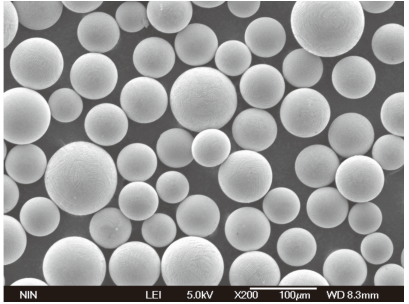
よくある質問
| 質問 | 回答 |
|---|---|
| 球状化パウダーとは何ですか? | スフェロイジングパウダーは、流動性と充填密度を向上させるために球状に加工された金属粉末の一種である。 |
| なぜ球状パウダーの方が良いのか? | 球状パウダーは、不規則なパウダーに比べ、流動性が良く、充填密度が高く、酸化が抑えられ、表面仕上げが改善されます。 |
| どのような産業で球状化粉末が使用されていますか? | 航空宇宙、自動車、医療、工業製造などの業界では、様々な用途に球状化粉末が使用されている。 |
| 球状化パウダーはどのように作られるのですか? | 球状化パウダーは通常、粒子を球状に丸める噴霧化または熱処理工程を経て製造される。 |
| 考慮すべき主な仕様は? | 主な仕様には、粒度分布、純度、流量、見かけ密度、真球度などがある。 |
| 球状化パウダーは高価ですか? | はい、球状化パウダーは球状にするために追加加工が必要なため、一般的に高価になります。 |
